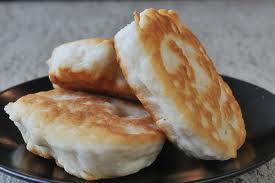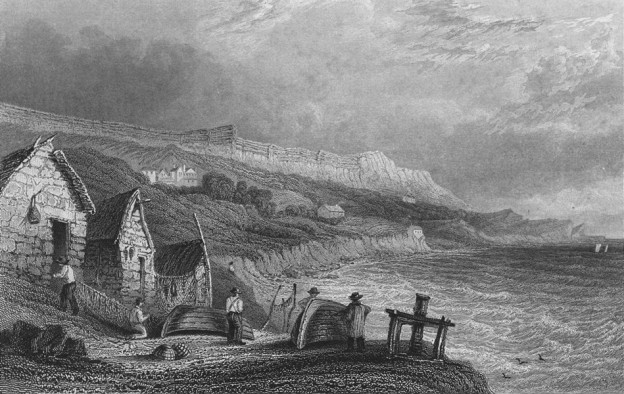That the Fairies would steale away young children and putt others in their places; verily believed by old woemen of those dayes: and by some yet living.
Aubrey for Wiltshire?
That the Fairies would steale away young children and putt others in their places; verily believed by old woemen of those dayes: and by some yet living.
Aubrey for Wiltshire?
Some Fairies dwell in the mines, and seem to imitate the actions of the workmen; but never unless insulted, do them harm, but rather are of semce to them. In certain silver and lead mines, in Wales, nothing is more common than these subterraneous spirits, called Knockers, who good naturedly point out where there is a rich vein. These Knockers are sometimes visible. Mr. John Lewis, iq his correspondence with Mr.Baxter, describes them as little-statured, and about half a yard long; and adds, that at this very instant. there are miners on a discovery of a vein of metal on his own lands, and that’two of them are ready to make oath they heard these Knockers in the day-time. Grose
Fairies sometimes shoot at cattle, with arrows headed with flint-stones : these are often found, and are called elf-shots. :ln order to effect the cure of an animal so injured, it is to be touched with one of these eif-shots, or to be made drink the water in which one has been dipped. Grose

Fairies appear to have all the passions and ‘wants of men’; but are great lovers of cleanliness and propriety;, for the observance of which they frequently reward servants, by dropping money in their shoes: they likewise severely punish sluts and slovens, by pinching them black and blue. Lilly says they are likewise friends to persons of strict diet, of an upright life, and using fervent prayers to God. Fairies are particularly fond of making cakes; in the doing of which they are said to be very noisy. In Ireland, they frequently lay bannocks, a kind of oaten cakes, in the way of travellers over the mountains and if they do not accept of the intended favour and eat the bannock, or at least take it up, they seldom escape a hearty beating, or something. Grose
Having some years since, on a Sunday afternoon, had occasion to ride on horseback between two towns in the eastern part of Cornwall, I met a christening party, also on horseback,headed by the nurse with a baby in her arms. Making a halt as I approached her, she stopped me, and producing a cake, presented it to me, and insisted on my taking it. Several years after, when in the Isle of Man, I had the opportunity of hearing an elderly person relate several pieces of folk lore respecting the witches and fairies in that island. It had been customary, within his recollection, for a woman, when carrying a child to be christened, to take with her a piece of bread and cheese, to give to the first person she met, for the purpose of saving the child from witchcraft or the fairies. Another custom was that of the ‘Queeltah,’ or salt put under the churn to keep off bad people. Stale water was thrown on the plough ‘to keep it from the little folks’. A cross was tied in the tail of a cow ‘to keep her from bad bodies’. On May morning it was deemed of the greatest importance to avoid going to a neighbour’s house for fire; a turf was therefore kept burning all night at home. Flowers growing in a hedge, especially green or yellow ones, were good to keep off the fairies. And finally, the last cake was left ‘behind the turf-flag for the little people.’ J. W. THOMAS. Dewsbury. Notes and Queries
He was not so very different from us after all, that old Roman, we are both Man the Destroyer, for we scar the landscape with cuttings for our fire-carriages — not half so picturesque as the war-chariots of our ancestors doubtless! — and insult the blue vault of the sky with networks of telegraph lines and, crowning injury, the dastardly outrage of advertising posters. But, thank Heavens! Z’s soap does not yet flaunt its merits in footlong letters from Beacon Hill, and the elves may dance in the fairy rings undismayed by sight of a glaring announcement that they should take A’s pills. If any doubt that there be elves let them go peep into a fold of the Downs below the training-ground where Porter’s horses have their daily gallop, and mark how the floor of the tiny vale has a mosaic of rings as regular as though planned out with rule and compass for fairies to race and dance in; then ask the old shepherd by the sheep-fold on the down beyond. He will stay night after night with his dog and black-faced sheep amid the illimitable solitudes of these hilltops, with no light but the cold glimmer from the stars, yet not for a fortune would he spend an hour of darkness alone in his red-tiled cottage a mile off down the vale! But there is always some light under the free heavens, and there is lightning every night but on Old Christmas Eve when the cattle – who have not yet learnt to reckon new style — still kneel down. Much more he can, an he will, which is to say the least exceeding doubtful, tell you, and of his own knowledge and experience relate as much about witches and fairy folk as you might hear at a twelvemonth of meetings in Albemarle Street ! Read and Connor, Highways and byways in Hampshire (1908)
There are many farms and closes in Sussex which owe their names to having been the reputed haunts of fairies, such as Pookryde, Pookbourne, Pookhole, Pookcroft. Pookhole is a name of a field in the Manor of Otteham, in Hailsham, and one of the local names in the Chronicle of Battle Abbey. Surrey Etymologies
In Moray, oak or ivy was used, the wreaths being used on the March following that in which they are cut. A persuasion also prevails there that in consumption the fairies steal away the soul of the patient and put the soul of a fairy in the place of it. Prevalent on the East Coast of Scotland. Lean’s Collecteana
In Inverness-shire they leave children wasting from consumption (supposed to be shadows left by the fairies in the place of the real ones ta’en awa’) by a particular well on a hillside the long summer night to end or mend them. Lean’s Collecteana

On mentioning the subject of Hampshire Fairies to Mr. Landseer, who has not confined his inquiries alone to ‘Sabean Researches,’ he pointed out to my notice the names of ‘Puck-pool,’ and ‘Puck-aster Cove,’ in the Isle of Wight. The former, which is about two miles from Ryde, near the eastern skirts of the grounds belonging to Appley, is now a small, sedgy, and neglected pond, which scarcely more than answers to the line, ‘The nine men’s morrice is filled up with mud;’ and beyond its name has nothing to recall Puck to the imagination. Puck-aster is a romantic fishing-cove on the south side of the island. ‘It may easily be conceived,’ said Mr. Landseer, ‘to have formerly been the scene of such fairy frolics as that merry wanderer of the night boasts of as being his pastime. Its hollows, where dank vapours must in past ages have lingered, are now drained ; and the plantations of Mr. Arnold, and other gentlemen, who have built cottages there, have rendered it a scene at once smiling and wild. But every poetical spectator will see at a glance that it must in days of ypre have been the very place where Robin Goodfellow, ‘in very likeness of a friar’s lantern,’ has laughed at the misled clowns; where those faithless phantoms,’ the wild-fires of autumn, have often sparkled and sported. The name Puck-aster (or Puck a Star) agrees precisely with these local phenomena. ‘When I visited this fairy spot,’ continues Mr. Landseer, ‘recollecting how large a portion of Shakspeare’s life there is of which nothing is known, and reflecting how impossible it is to suppose that any portion of his life could have been inactively spent; my fancy was quite ready to fill up part of the hiatus with a supposition that our great bard was at some time during that period rambling with strolling players, and that in the course of those rambles he had visited the Isle of Wight, and gathered there some of his local fairy lore. Some thirty and odd years ago, when I was there, the island was periodically visited by histrionic strollers from ‘the continent of England.’ (This was an immemorial custom). And in the time of Shakspeare, the Isle was so well wooded, that he might have found in it all his fairy scenery (for it may well be classed under sea-shore and forest scenery); and where else do you find the name Puck stamped on the country itself?’